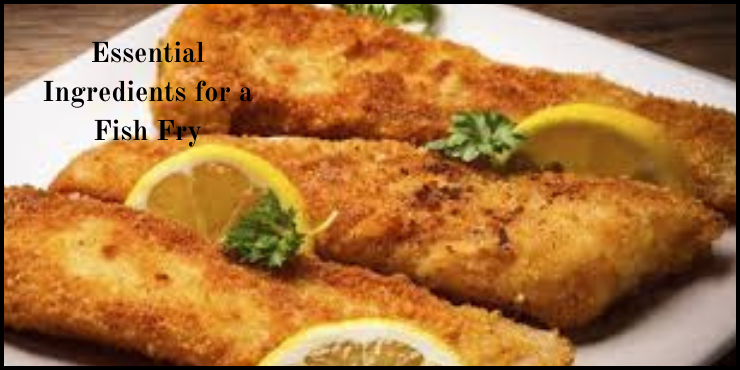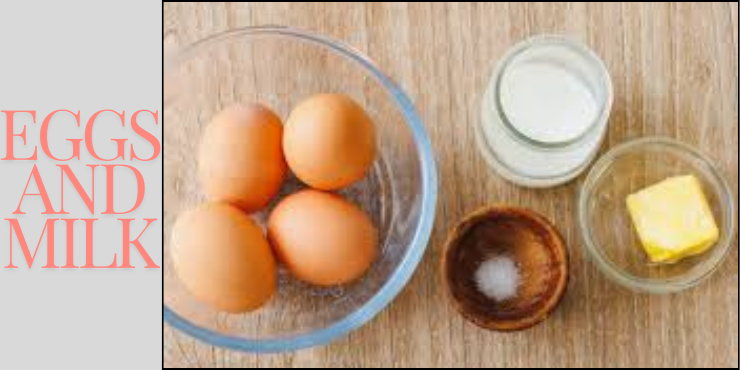Introduction
Fish fry Ingredients: the very mention of it conjures up images of crispy, golden fillets, and the tantalizing aroma of fresh seafood. Whether you’re planning a casual dinner or a summer get-together, mastering the art of a fish fry can make you the star of any occasion. In this article, we’ll walk you through everything you need to know about the essential ingredients for a perfect fish fry, ensuring your fish is crispy on the outside and tender on the inside. Ready to dive in? Let’s get started!
Choosing the Right Fish
Types of Fish Ideal for Frying
Not all fish are created equal when it comes to frying. Some fish hold up better to the frying process, giving you that perfect texture and flavor. Popular choices include:
- Cod: A mild flavor and flaky texture make this a favorite.
- Catfish: Known for its moist, firm flesh.
- Tilapia: A budget-friendly option with a neutral taste.
- Haddock: Slightly sweet with a firm texture.
- Perch: Small fillets that are great for a quick fry.
Freshness and Quality Checks
Always opt for the freshest fish available. Look for clear, bright eyes, firm flesh, and a fresh, sea-like smell. Avoid fish with a strong, fishy odor or dull, discolored skin.
Essential Ingredients for a Fish Fry Ingredients

Fish
The star of the show! Choose your preferred type of fish based on taste and availability.
Flour and Cornmeal
A combination of flour and cornmeal creates the perfect crispy coating. Cornmeal adds extra crunch while flour ensures an even coating.
Eggs and Milk

These wet ingredients help the dry coating adhere to the fish, creating a thick, even layer.
Seasonings and Spices
Seasonings are what transform your fish fry from bland to grand. Basic salt and pepper are essential, but spices like paprika, cayenne, garlic powder, and onion powder can add a delicious kick.
Cooking Oil
Choosing the right oil is crucial for a successful fish fry. We’ll dive deeper into this later.
Preparing the Fish
Cleaning and Cutting
Start by rinsing your fish under cold water. Pat it dry with paper towels. Depending on the size of the fish, you may need to cut it into smaller pieces to ensure even cooking.
Marinating the Fish
Marinating isn’t mandatory, but it can infuse your fish with extra flavor. A simple marinade of lemon juice, salt, and a bit of olive oil can work wonders. Let the fish marinate for about 30 minutes before frying.
Making the Batter
Flour and Cornmeal Mixture
Mix equal parts flour and cornmeal in a bowl. Add your seasonings to this mixture to ensure every bite is flavorful.
Wet Ingredients
In a separate bowl, beat eggs and mix with milk. This will help the dry coating stick to the fish.
Combining for Perfect Consistency
Dip each fish piece into the wet mixture, then dredge it in the dry mixture, making sure it’s fully coated. The goal is to achieve an even, clinging layer of batter.
Seasoning Your Fish
Basic Seasonings
Salt and pepper are must-haves. Start with these, then build your flavor profile from there.
Advanced Spice Blends
Experiment with paprika, cayenne, garlic powder, onion powder, and even a touch of turmeric for a unique twist.
Regional Variations
Southern-style fish fries often include a bit of heat from cayenne pepper. Northern versions might lean more on herbs like dill and parsley.
Choosing the Right Oil for Frying
Types of Oil
Canola oil, peanut oil, and vegetable oil are all excellent choices due to their high smoke points and neutral flavors.
Smoke Points
The smoke point is the temperature at which oil starts to smoke and break down. Oils with high smoke points (above 400°F) are best for frying.
Health Considerations
While frying isn’t the healthiest cooking method, using oils like canola or peanut can be a better option due to their lower levels of saturated fats.
Setting Up Your Frying Station
Equipment Needed
- Deep fryer or heavy-bottomed pot
- Thermometer: To monitor oil temperature.
- Tongs or slotted spoon: For turning and removing fish.
- Paper towels: To drain excess oil.
Safety Tips
- Never leave hot oil unattended.
- Keep a lid nearby to smother potential grease fires.
- Use tongs to prevent burns.
Frying the Fish
Ideal Temperature
Heat your oil to around 350°F. Too hot, and the outside will burn before the inside cooks. Too cool, and the fish will absorb too much oil and become greasy.
Frying Techniques
Fry the fish in small batches to maintain the oil temperature. Cook each piece for about 3-4 minutes per side, depending on thickness.
Avoiding Overcrowding
Overcrowding the pot lowers the oil temperature, leading to soggy, unevenly cooked fish. Give each piece plenty of room.
Testing for Doneness
Visual Cues
Your fish is done when it turns golden brown and floats to the top of the oil.
Using a Thermometer
For extra assurance, the internal temperature of the fish should reach 145°F.
Serving Suggestions
Traditional Sides
Classic accompaniments include coleslaw, fries, hush puppies, and tartar sauce.
Modern Twists
Try serving your fried fish with a side of quinoa salad, sweet potato fries, or a tangy mango salsa for a contemporary twist.
Tips for a Perfect Fish Fry
Common Mistakes to Avoid
- Overcooking: Leads to dry, tough fish.
- Using old oil: Can impart off-flavors.
- Skipping the seasoning: Results in bland fish.
Pro Tips from Experts
- Pat the fish dry before battering for a crispier coating.
- Let battered fish rest for a few minutes before frying to help the coating set.
- Use a cooling rack instead of paper towels to drain the fish, keeping it crispier.
Cleaning Up After Frying
Proper Disposal of Oil
Let the oil cool completely before disposing of it. Strain and reuse if it’s still clean, or find a local disposal center for large amounts.
Cleaning Equipment
Hot, soapy water is your best friend. For stubborn grease, a bit of baking soda can work wonders.
Storing Leftovers
Best Practices
Store leftover fried fish in an airtight container in the fridge. Consume within 2-3 days for best quality.
Reheating Tips
Reheat in the oven to 350°F to maintain crispiness. Avoid the microwave, as it can make the coating soggy.
Conclusion
Fish frying is more than just a cooking method; it’s an art form. With the right ingredients, techniques, and a bit of practice, you can create mouth-watering fried fish that will have everyone coming back for seconds. Don’t be afraid to experiment with different seasonings and sides to make the dish your own. Happy frying!
FAQs
What type of fish is best for frying?
Cod, catfish, tilapia, haddock, and perch are all excellent choices for frying.
How do you keep fried fish crispy?
Pat the fish dry before battering, fry at the right temperature, and let it drain on a cooling rack instead of paper towels.
Can you fry fish without batter?
Yes, you can fry fish without batter by simply seasoning it and frying it in a bit of oil until golden and cooked through.
What’s the best oil for frying fish?
Canola oil, peanut oil, and vegetable oil are great options due to their high smoke points and neutral flavors.
How do you know when fish is done frying?
The fish is done when it’s golden brown, floats to the top of the oil, and reaches an internal temperature of 145°F.

